Digital Egyptology news can now be followed at my website https://digitalegyptology.org/
My love for 3D reconstructions of ancient sites is founded on those turn of the millenium computer games that were described as ‘edutainment’. As a true nerd, I revelled in 3D point-and-click adventures that brought the player back to ancient places such as Egypt, Mexico and China. The beauty of these games was that they were produced in collaboration with actual scholars, who guarded the historical accuracy of the story, environment, characters and props. The games also included a documentary space (this was before everyone had proper internet access) and the option to view the locations independent of the story. In this blog post I will discuss the Egypt series, which was started by Cryo Interactive Entertainment and continued by Kheops Studio.
Egypt 1156 B.C.: Tomb of the Pharaoh (1999)
One of the first adventure games I ever played is set in 20th dynasty Thebes, during the tomb robberies referred to for example in the Abbott Papyrus. As the son of a high official charged with the intrusion of the tomb of Seti I, you are sent a letter by an anonymous friend to warn that you have three days to catch the true culprit before your father is innocently judged. Throughout the game you are granted access to key sites (the tomb of Seti I, Deir el-Medina, an embalmer’s workshop, a nobleman’s tomb, the house of a nobleman, and Karnak Temple), where you must search for clues in order to complete a document that will reveal the name of the evildoer. Then you must find the right evidence to convict them.
Although the graphics are static and dated, there are some glitches in the gameplay, and the story is probably incomprehensible to non-Egyptologists, this was my first encounter with ancient Egypt in 3D and therefore remains special to this date. The game is admirable for its attempt to tell an Egyptologically accurate story, showing (but not really explaining) subjects like the mummification process, a nobleman’s banquet, temple astronomy and even the roll call before work in the Valley of the Kings. It gives a fair view of a torchlit royal tomb, the maze-like streets of Deir el-Medina, and a nobleman’s tomb from the Theban necropolis. If these elements were to be developed and the graphics brought up to date, it would be an interesting project today (à la Giza 3D). Imagine a detailed 3D reconstruction of the tomb of Seti I according to modern standards!
 Inside the tomb of Seti I
Inside the tomb of Seti I
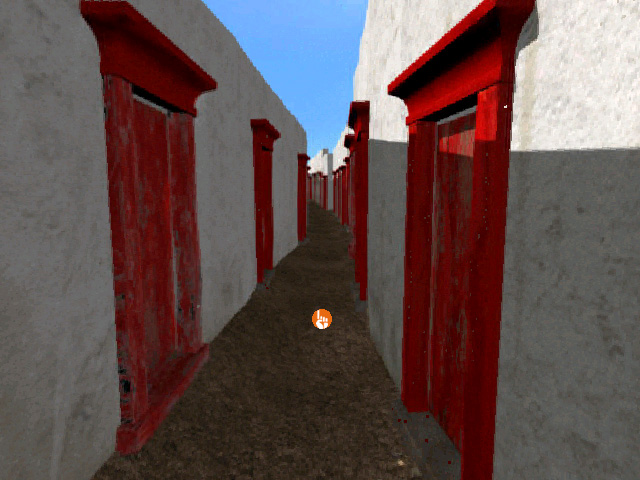 The narrow streets of Deir el-Medina
The narrow streets of Deir el-Medina
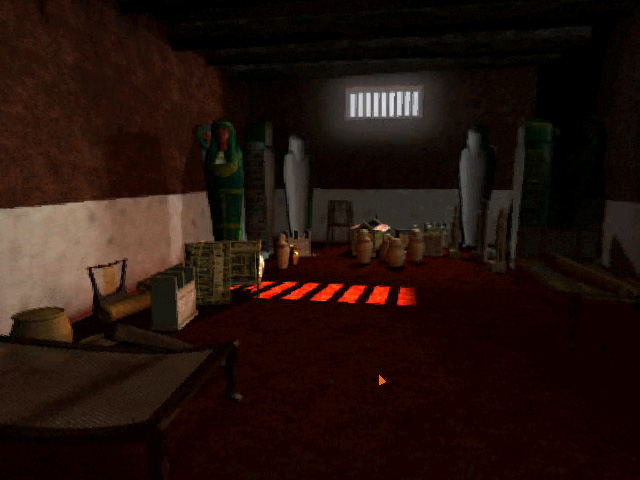 Inside an embalmer’s workshop
Inside an embalmer’s workshop
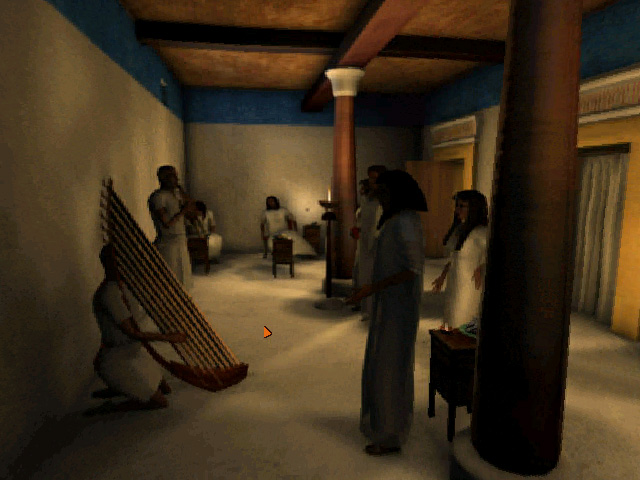 At a nobleman’s party
At a nobleman’s party
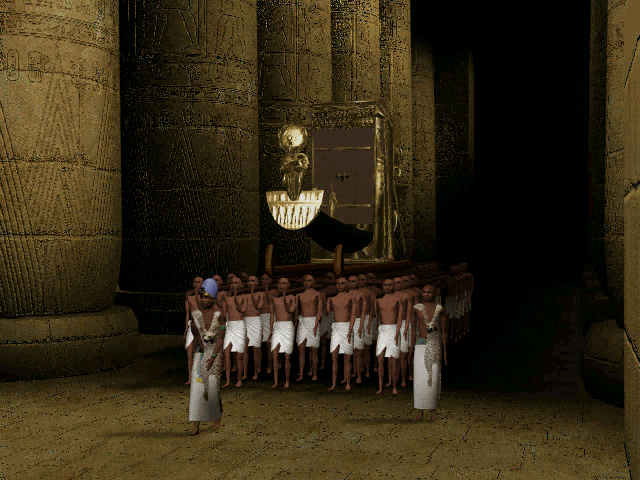 Cutscene: the Opet festival
Cutscene: the Opet festival
Egypt II: The Helipolis Prophecy (2000)
The second installment in the series is set in 18th dynasty Heliopolis and presents a stand-alone story. There are less locations to explore (chiefly the town itself, the temple and the governor’s villa), but each is rendered more detailed and realistic. The environments are well done: there is dirt in the streets, women are selling household goods in market stalls and the sober interior of the town houses is in stark contrast with the garden of the nobleman’s villa and the splendour of the temple. The interesting thing about this game is that it attempts to reconstruct a site that is archaeologically very badly attested. The story is more cleverly constructed than is the case with its predecessor, and the game contains more character interaction and inventory-based puzzles. The background music is also very well done.
The heroine of the story, priestess/physician Nefermaat called Tifet from the temple at Bubastis, has a prophetic dream after which she is woken by a messenger carrying a letter from Heliopolis. Her adoptive father Djehouty has fallen ill and requests your presence. The mysterious disease turns out to affect many citizens and it is your task to find the cause. Using your medical skills (a book of potions and a collection of herbs) as well as cleverness, you must undertake to solve the problem. To do this you must gain access to the House of Life (the temple library), but also break into the villa of an important official. Meanwhile, the player can learn more about city life, social history, medicine and the economic role of the temple in ancient Egypt.
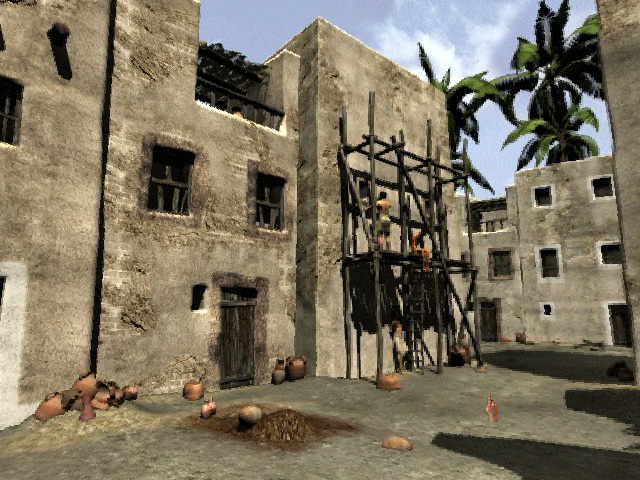 The messy streets of Heliopolis
The messy streets of Heliopolis
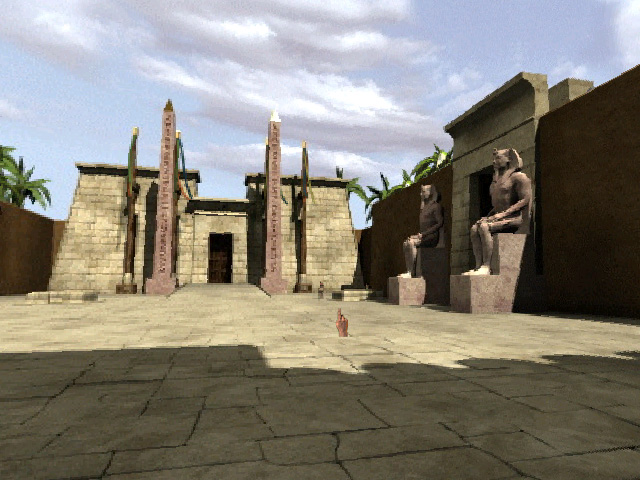 The temple courtyard
The temple courtyard
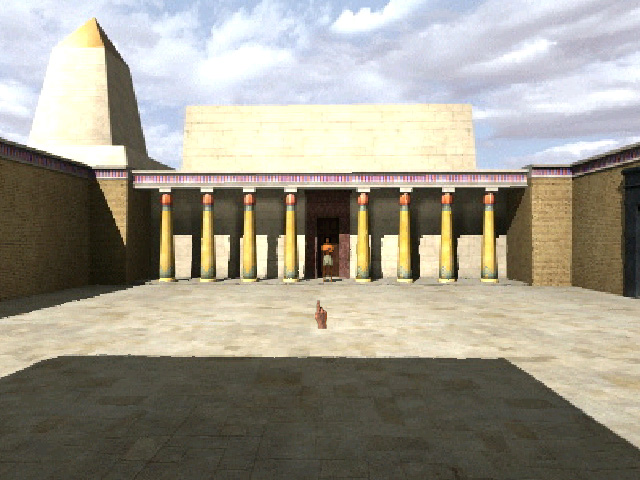 The House of Life (notice the obelisk on the left)
The House of Life (notice the obelisk on the left)
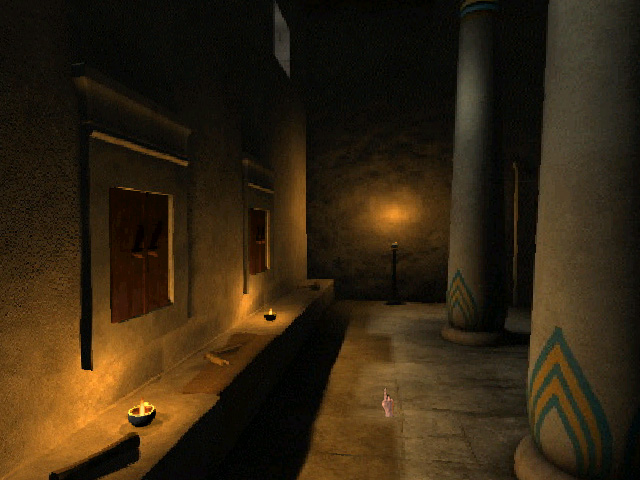 Inside the House of Life
Inside the House of Life
 The nobleman’s garden
The nobleman’s garden
Egypt 3: The Egyptian Prophecy (2004)
A prophecy is again the subject of the third game in the series. This time, king Ramses II must raise an obelisk at the temple of Amun-Re in order to receive a long life from the gods. When the master architect Paser falls ill, a magician is sent to the site to clear up the mystery. Thus you direct the female magician Maya through the temple of Amun-Re at Pi-Ramses, the granite quaries of Aswan and the temple of Ptah in Memphis. The best bits are where you enter the world of the gods, such as the Underworld of Ptah, the Field of Reeds where you encounter Isis, and the Book of the Dead where you finally appear before Osiris.
The story has much in common with the previous game, although this time magic rather than medicine is the subject. Along the way you will learn some magical spells that have to be used at certain points. The game tries less to be historically accurate (e.g. the anachronistic use of the word ‘pharaoh’ and the fact that ‘Maya’ is used as a female name), and the graphics are more cartoon-like. Although the game is fairly easy (the main character usually tells you exactly what to do), it contains some interesting puzzles. A documentary space is included, but the locations cannot be visited independent of the storyline.
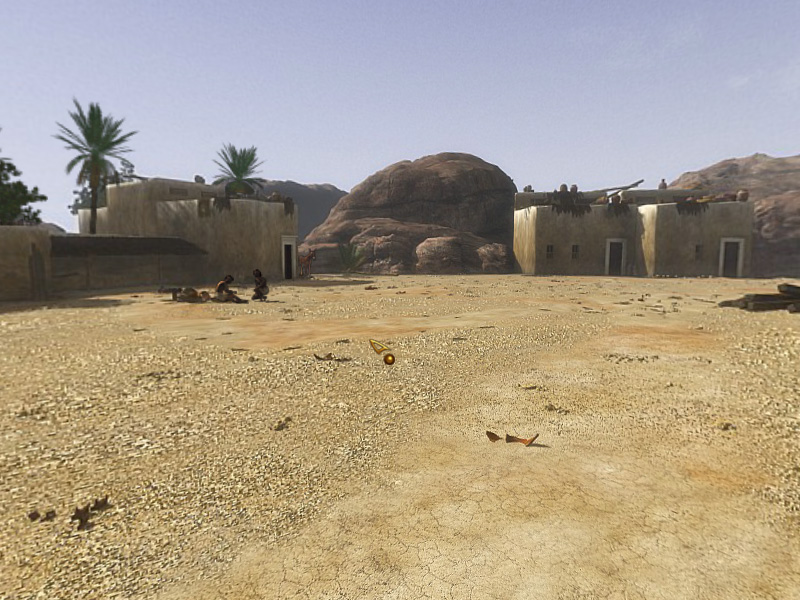 The dusty town of Aswan
The dusty town of Aswan
 The high priest of Ptah at Memphis
The high priest of Ptah at Memphis
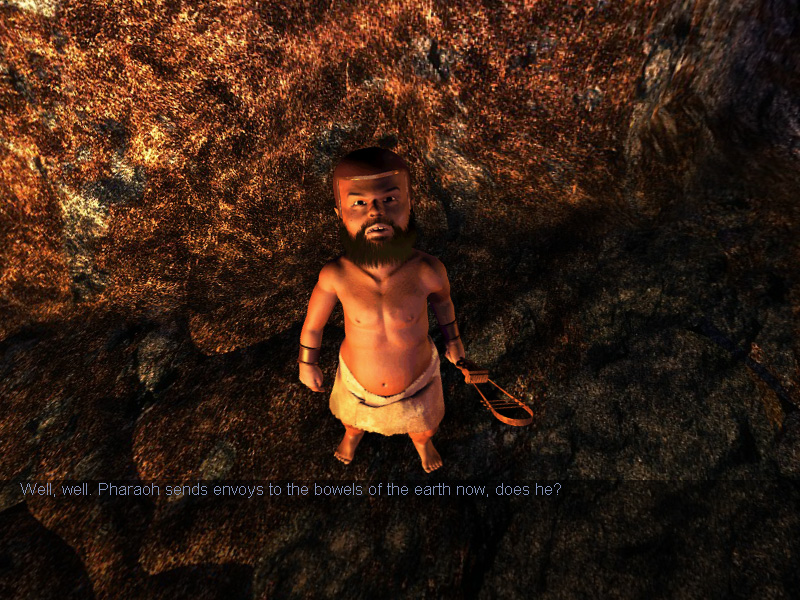 One of Ptah’s mining dwarfs
One of Ptah’s mining dwarfs
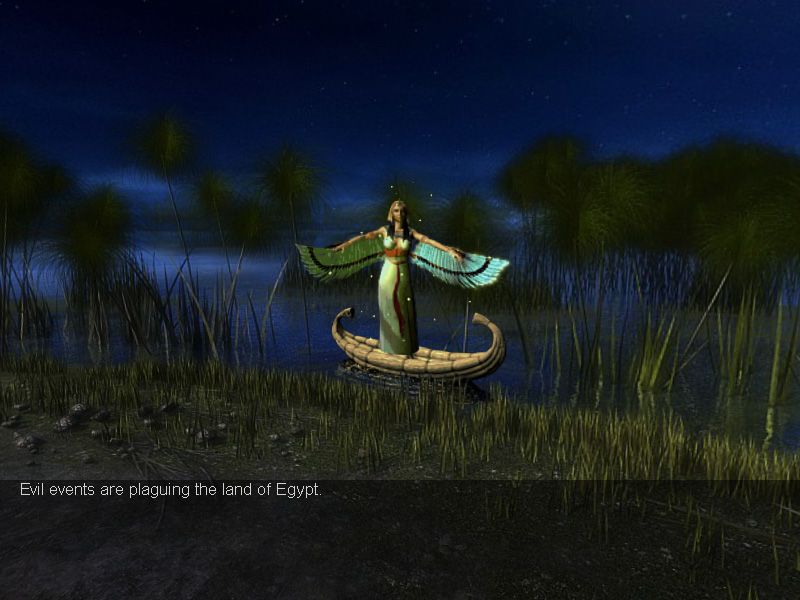 Isis flapping her wings
Isis flapping her wings
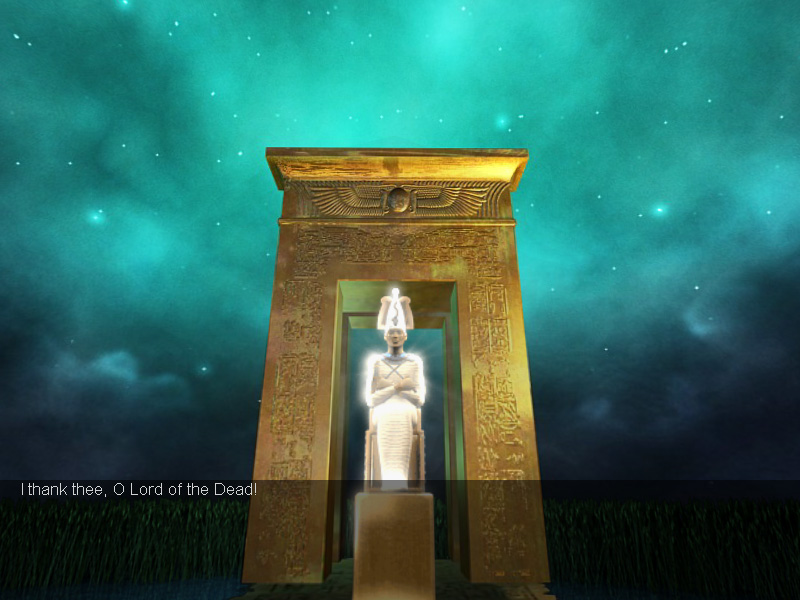 Meeting Osiris
Meeting Osiris
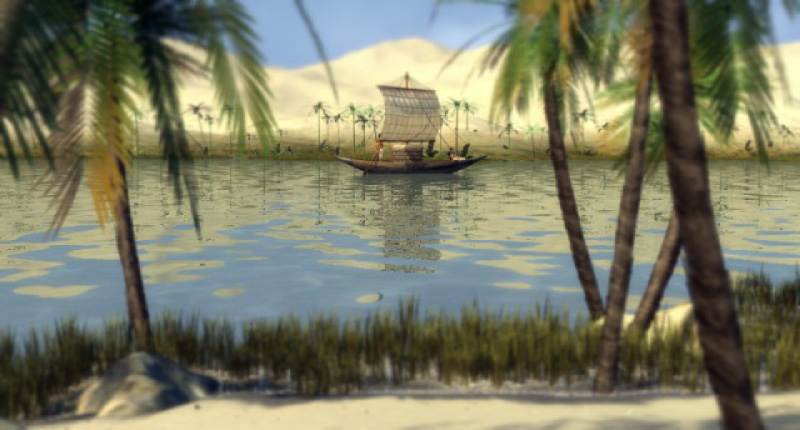 Cutscene: Nile travel
Cutscene: Nile travel
All in all, it is surprising that not more historical adventure games were made with ancient Egypt as its backdrop (I here leave out Cleopatra: A Queen’s Destiny). Creating historical games is always tricky as many errors can be made. However, there are enough (unemployed) Egyptologists out there who could tell an interesting story, and work out the details so they are historically plausible. How about an adventure game set in Memphis or Luxor that is half archaeological, half historical? Time to start 3D modeling myself…
This is the game I played years ago. Is this game still available for download, or I think it would be necessary to have the dvd, if you know where I can get one